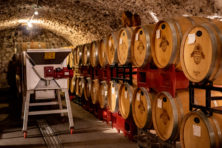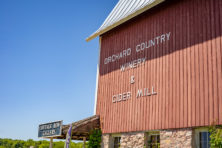Wine Trails: Mixed MEADia Breaks the Rules
- Share
- Tweet
- Pin
- Share
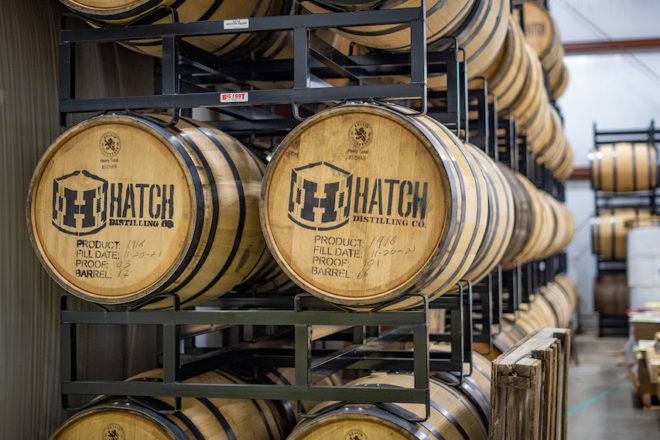
After Allan Hyland, the winemaker at Door County’s newest winery, explained how he planned to use the abundance and uniqueness that Door County has to offer to make his wine, he surprised me with this statement: “I want people to drink the wine I make not because the wines are local, but because they are awesome,” he said.
Hyland had just described how much Door County offers a winemaker: three large bodies of water, which moderate the temperatures; limestone soil, which keeps the roots of the grapevines dry – grapevines that were developed specifically for cold-climate areas such as Door County; and the area’s many wildflowers, which take turns providing food the peninsula’s pollinators throughout the growing season. Door County supplies the resources, but exceptional wine does not make itself.
Hyland’s wine operation, Mixed MEADia, highlights the role that honey plays in his creations. Mixed MEADia is a small-batch winery housed within the Hatch Distilling Company in Egg Harbor.
Hatch, owned by Chris Roedl, offers a portfolio of vodka, gin, bourbon, malt whiskey, brandy and even specialty liquors such as Limoncello and Dos Hobos, made in the reposado mezcal tequila style. Hatch’s home page proclaims, “We are distillers, beekeepers, farmers and foragers, pushing the boundaries of what ‘craft’ is.”

But I went to Hatch to learn about wine. After hearing Hyland share his passion, vision and mission concerning his new winery, I could see that the fit between the distillery and winery was glove-like. He explained how he uses honey to make his mead – the earliest style of wine – and the distinctive characteristics that natural honey gives the beverage.
Hyland will integrate local honey with the fruit-juice wines he’ll be offering this spring. His background is in agriculture, and it’s clear that’s where the evolution of his winemaking has its roots. He made the case that most of the top wine-grape growing regions started as lands covered with apple and cherry orchards.
When Hyland referred to the rules of winemaking, his expression and tone held a hint of skepticism. He argued that the accepted rules of winemaking were taking winemakers away from an art form that created the first great wines and narrowed their opportunities to produce newer, equally great wines. Those rules are more of a collection of biases that serve as a security blanket, keeping winemakers from becoming true artists.
It was clear that Hyland was not going to let rules keep him from using the soil, water, bees and flowers of Door County to take full advantage of newly developed cold-climate grapes to produce what I can think of only as defining true Door County wines.
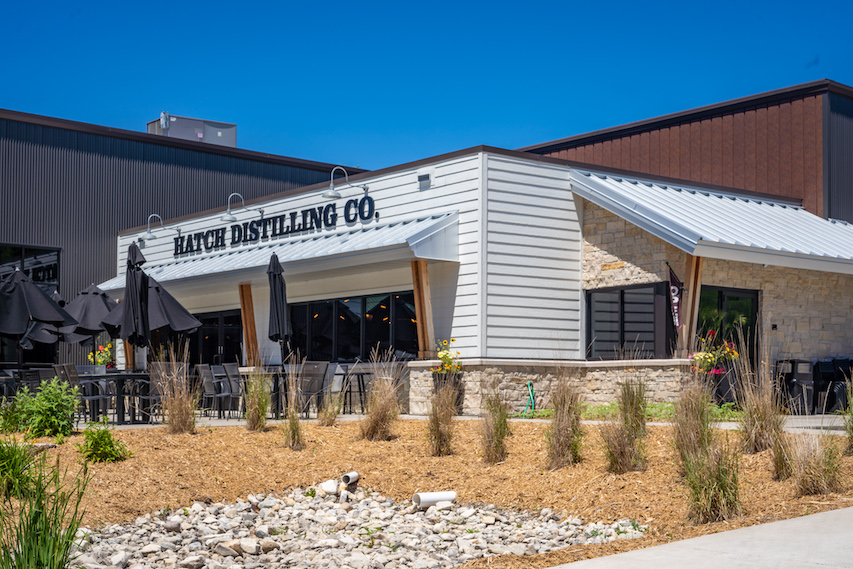
Hyland’s current portfolio is limited to meads, and he plans to integrate honey in the production of grape wines, driving home his point that creating art and ensuring quality are made easier by ignoring rules.
He said he has two projects that he’s passionate about and plans to produce the first fruits of his labor by this spring. His first project is a sparkling wine, produced from cold-climate Wisconsin grapes. He talked about the similarities between Door County and the Champagne region of France, the originator and most respected sparkling-wine area.
Hyland’s second project is to create a fresh, crisp, aromatic white wine that would represent Door County. He said this style of wine is a natural choice as a signature wine of the peninsula and could be produced by any, or all, of the county’s winemakers in their own individual style. The peninsula’s geography is well suited to growing acidic and aromatic grapes.
I felt obligated – in the name of solid journalistic research – to sample a few of Hyland’s meads. They were, as advertised, aromatic, crisp, distinctive and most importantly, really good. Tasting the Pop Art Cherry Cyser felt like a total indulgence in Door County.
Hearing about Hyland’s passion and energy led me to reflect on two concepts. The first was that making wine is much like creating art, and the difference between a winemaker and an artist lies only in the media they use – or, as Hyland would most likely say, the meadia.
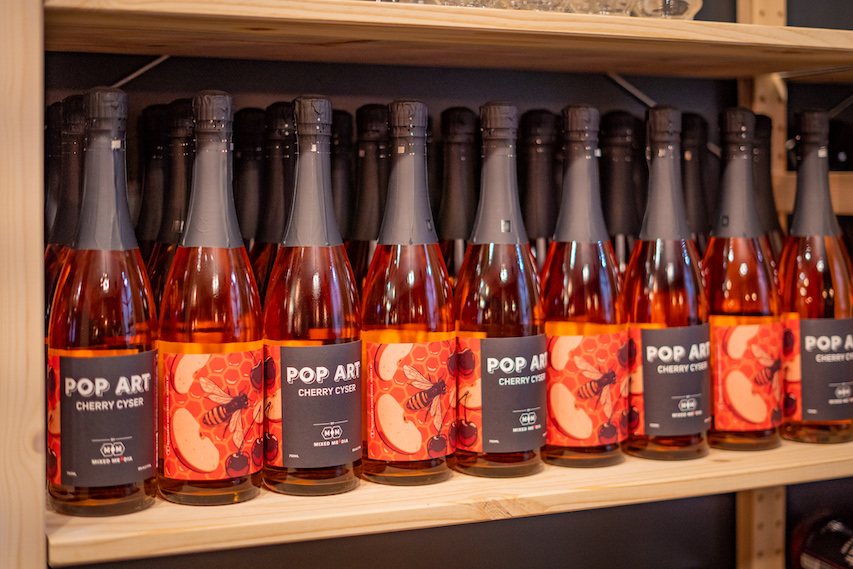
The second concept was really a question: What determines quality? Quality is often subjective, so should it be decided by adherence to preset rules or by some other method? Famous wine regions gained respect by planting grapes that fit beautifully with their terroir and produced wine that clearly represented those regions, shaped by the creativity and style of the individual winemakers.
These two thoughts led me to another question: Can Door County become a respected terroir, estate, wine region? Mixed MEADia’s meads and wines give me hope that it can.
Jim Schnaedter describes himself as a wine appreciator, but not an expert. “I love drinking it, pouring it, talking about it and writing about it, but the more I do of each, the more I learn what I don’t know about it.” He sets out to discover Door County wines and their makers in this series.


